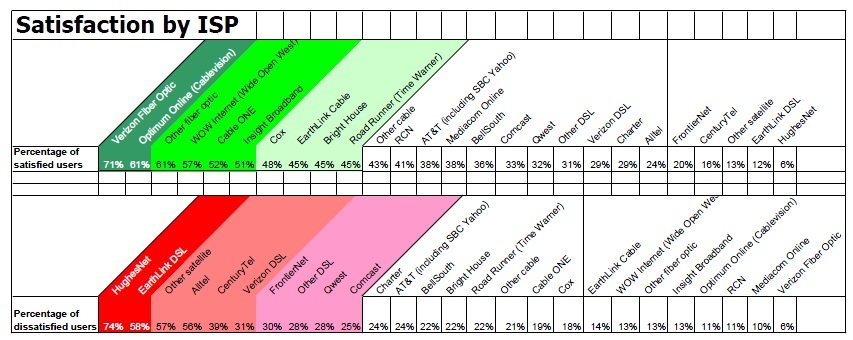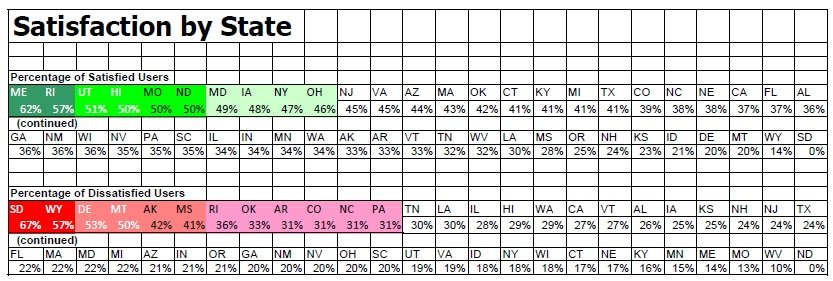The usually business-friendly editorial page of the Wall Street Journal published a surprising editorial this morning which threatens to cause a tear in the very fabric of space. Why AT&T Killed Google Voice: Telecom Operators Are Yesterday’s Business — It’s Time for a National Data Policy That Encourages Innovation, strikes at the heart of the telecommunications industry’s business models, and dismisses them as increasingly outdated, anti-innovation and anti-consumer.
Welcome to our world.
Using the example of AT&T’s blocking Google Voice from iPhone users, which would allow them to bypass their AT&T plan to make long distance calls, author Andy Kessler, a former hedge fund manager, believes this was the moment America wakened to the realization that telecommunications companies and government policies block innovation and limit competition.
To that, I have to wonder, where has Kessler been the last decade?
Perhaps the Google Voice debacle impacted him personally, and that got his fur in a ruffle. What AT&T did represents business as usual for those of us who have seen it all before.
Telecommunications companies have influenced most of the government policies that govern them, using high priced lobbyists, astroturfing friends, and bait and switch promises of magical service at dirt cheap prices, if only their legislative agenda becomes law.
Supporting them are many of the subscribers of the Wall Street Journal, investors and the investment media that tut-tuts new competitors or game-changing innovation that shakes up the marketplace, and launches price wars that threaten shareholder value. Legislation that hampers industry profits or enacts consumer protection is called “government interference” in most WSJ editorials, while deregulation that strips away oversight and ignores the abusive practices common in highly concentrated markets is advocated as the one-size-fits-all “free market solution.”
Apple has an exclusive deal with AT&T in the U.S., stirring up rumors that AT&T was the one behind Apple rejecting Google Voice. How could AT&T not object? AT&T clings to the old business of charging for voice calls in minutes. It takes not much more than 10 kilobits per second of data to handle voice. In a world of megabit per-second connections, that’s nothing—hence Google’s proposal to offer voice calls for no cost and heap on features galore.
What this episode really uncovers is that AT&T is dying. AT&T is dragging down the rest of us by overcharging us for voice calls and stifling innovation in a mobile data market critical to the U.S. economy.
I wonder what Kessler will think if AT&T’s market trials in Beaumont and Reno suggest they can limit his Internet access and then charge overlimit fees per gigabyte thereafter? AT&T may have a lot more “dragging” capability than he realizes.

Andy Kessler
Is AT&T dying? In the traditional wired phone line market, there is evidence they are headed into a slow decline as consumers dump overpriced and overtaxed phone lines for Voice Over IP or mobile phone service. They certainly aren’t hurting in their mobile phone business. They’ve become quite comfortable, thank you very much, splitting the majority of mobile telephone customers in the United States with Verizon Wireless. The companies in real trouble are the smaller players fighting for the scraps thrown from the table — a declining Sprint, T-Mobile, Cricket, MetroPCS, among many others. They are being told to merge with each other or die by Wall Street.
Is AT&T stifling innovation by being run badly? Of course not. They are leveraging their market power to limit potential competition or innovation that forces them into costly upgrades they’d prefer not to do. With their expensive “public policy” initiatives (read that “K” Street lobbying), they’ve also got a lot of elected officials and government agencies on their side as well. A Congress that doesn’t demand greater competition, strong antitrust oversight, and a ban on anti-consumer practices, coupled with a bunch of “don’t ask, don’t tell” oversight agencies that only respond to the most egregious abuses (until the media spotlight is turned off), represents the real problem here.
The trick in any communications and media business is to own a pipe between you and your customers so you can charge what you like. Cellphone companies don’t have wired pipes, but by owning spectrum they do have a pipe and pricing power.
True, except Kessler ignores the fact AT&T and Verizon do own wired and wireless pipes, from coast to coast. Both companies are highly vertically integrated, often serving customers with everything from their basic telephone service to television, broadband, and mobile phone needs. Customers are heavily marketed to pick up additional product lines from both companies — products not available from the smaller guys like Sprint, T-Mobile, and others.
Kessler also suggests it’s the bidding war for wireless spectrum that results in high prices for consumers. Even if true, his free market friends would suggest that is the marketplace at work. Of course, the real reason for high pricing in mobile service is the lack of competition coupled with the convenience of “stable pricing.” Namely, the current carriers are quite comfortable not rocking the boat too much with one another, which explains why virtually all of them charge comparable prices for wireless data, text messages, and voice plans. What they will fight for is handset exclusivity, because it never threatens price and service models. In fact, it allows them to charge even higher premium pricing for highly-sought handsets and the mandatory service plans that sometimes accompany them. The iPhone is a perfect example of that at work.
Kessler has four prescriptions to cure the American telecommunications ailment:
• End phone exclusivity. Any device should work on any network. Data flows freely.
• Transition away from “owning” airwaves. As we’ve seen with license-free bandwidth via Wi-Fi networking, we can share the airwaves without interfering with each other. Let new carriers emerge based on quality of service rather than spectrum owned. Cellphone coverage from huge cell towers will naturally migrate seamlessly into offices and even homes via Wi-Fi networking. No more dropped calls in the bathroom.
• End municipal exclusivity deals for cable companies. TV channels are like voice pipes, part of an era that is about to pass. A little competition for cable will help the transition to paying for shows instead of overpaying for little-watched networks. Competition brings de facto network neutrality and open access (if you don’t like one service blocking apps, use another), thus one less set of artificial rules to be gamed.
• Encourage faster and faster data connections to our homes and phones. It should more than double every two years. To homes, five megabits today should be 10 megabits in 2011, 25 megabits in 2013 and 100 megabits in 2017. These data-connection speeds are technically doable today, with obsolete voice and video policy holding it back.
An end to phone exclusivity will require government regulation, something unlikely to gain much support from his free market friends. An even better idea is to stop the cozy relationship between carriers and phone manufacturers by allowing phones to be sold independently, without customers being pressured into two year contracts to enjoy a phone subsidy. Any phone, sold anywhere, with compatible technology (GSM, CDMA, etc.) should work on any network without a company trying to browbeat customers into contracts, even when bringing along their own phone. That customer should also be allowed to reprogram their phone to work with another compatible carrier at any time.
Kessler is naive about “owning” airwaves. Since the government decided it could profit from auctioning them off to the highest bidder, they’ve become monetized and highly valuable. They are no longer truly licensed in the public interest — they’ve become private property, to be vigilantly protected from encroachment. Be it satellite, wireless telephony, radio, television, or innovative new services not yet launched, the moment someone applies for a license to share spectrum with existing providers, a chorus of complaints about potential interference arrives at the FCC, with scare stories about potentially massive disruptions. In reality, the grounds for these hissyfits are more frequently about the fear of competition.
It’s time to admit the concept of airwave auctions has been shortsighted. While it may bring the government revenue, it will be recouped from consumers as part of provider pricing models. The higher the bids, the higher the price providers will charge customers for that service. Let’s consider granting licenses not based on who can bid highest, but rather who can provide the best possible service at reasonable prices to the public. Those that fail to serve the public interest, or engage in bad behavior, have the very real opportunity of losing that license. That’s quite an incentive to serve customers first. It’s such a pro-consumer, novel idea, expect millions of dollars to be spent on lobbying to make sure it never happens.
Municipal exclusivity deals for cable companies ended in 1992 as part of the Cable Television Consumer Protection and Competition Act (the only bill President George H.W. Bush vetoed that was overridden by Congress). I know because I was integrally involved in fighting for that legislation. In the last 17 years, there hasn’t exactly been a rush to wire up communities with competing cable companies, now has there?
Let’s be honest here. Less regulation will not compel cable competition, no matter how much the astroturfers and special interest lobbyists promise it. Construction and capital costs to “overbuild” a cable provider in most American cities are high enough to discourage investment from the private sector, particularly when they fear a price war will result and reduce profits, and shareholder value. Overbuilders like El Grande in Texas had to sell themselves to a more capital-rich company just to find financing to build out their network.
I’m afraid without incentives like tax credits or other benefits, the prevailing attitude is that all but the largest cities will make due with one wired phone company and one wired cable company at best. Only one major provider has seen fit to rewire their service areas with the most robust technological advancement – fiber to the home. Verizon has done so, with considerable resistance from investors, in their effort to avoid the obsolescence Kessler foresees in the telephone line business. But Verizon is only wiring limited areas, primarily in urban areas, but almost never in smaller communities. For customers of other phone companies, particularly smaller independent providers, too bad for you. Their only hope may be a publicly financed, or public-private partnership, fiber optic wiring project that acts as a common carrier. Any provider can deliver their service over it, allowing customers to choose.
Because of the duopoly/monopoly state of cable and broadband service in the United States, Net Neutrality will never be protected through competition. In Canada, when Bell throttled and interfered with Internet service, most cable competitors simply joined the party and did the same. When a few upstarts, resold un-throttled Bell wholesale broadband service and made that a selling point, Bell simply throttled them, too, without warning. That put a stop to that pesky competition problem. Canada foreshadows what will likely happen in the United States without strong Net Neutrality legislation.
Finally, Kessler’s vision of what is holding back broadband speed totally ignores provider complicity in the slow momentum forward. While some providers have a progressive attitude about speed, seeing faster broadband’s revenue earning-potential, others see it as an unnecessary expense that most consumers don’t really need. Time Warner Cable, the nation’s second largest cable company, remains on record as being in no hurry to upgrade to DOCSIS 3 technology, unless one of their competitors threatens to beat their speeds. In fact, they’ve expressed repeated interest in cost controls by experimenting with ways to limit data consumption, protect their video business model, and extract more revenue from customers at current speeds.
If Kessler was looking to the phone companies for an alternative, most Americans can forget it. Most phone companies, especially smaller independents, have maintained a death grip on old school DSL technology, which provides 1-3Mbps service in rural areas, and “up to 10Mbps” (if you are very, very lucky) in urban and suburban areas. They are rapidly losing wired phone customers and are holding out for whatever revenue they can grab from yesterday’s broadband technology, usually doing best only where cable doesn’t compete at all. Some even want to limit consumption at the slow speeds those networks operate at today. They are in no hurry to upgrade their existing copper wire networks, much less agree to the “double speed” plan Kessler has.
I’m sorry to say Kessler’s marketplace-based hopes and dreams for a better telecommunications world tomorrow are not forthcoming. Without radical changes in the current “whatever the providers want is okay with us” regulatory approach we have today, the only innovation Kessler should expect to see is providers finding new ways to charge more money for the same service we have today.
We need a complete review and reality check about the total failure of the deregulation-solves-everything approach we’ve lived under for more than a decade. If Kessler wants faster speeds, more competition, lower prices, and less market abuse, he will never find it without government involvement. Remember, in the absence of real competition from those that actually want to compete to win, not just share the healthy proceeds from the status quo, we need stronger arguments than “the free market solves everything” and “won’t you please do it out of the goodness of your heart and civic duty?”


 Subscribe
Subscribe




